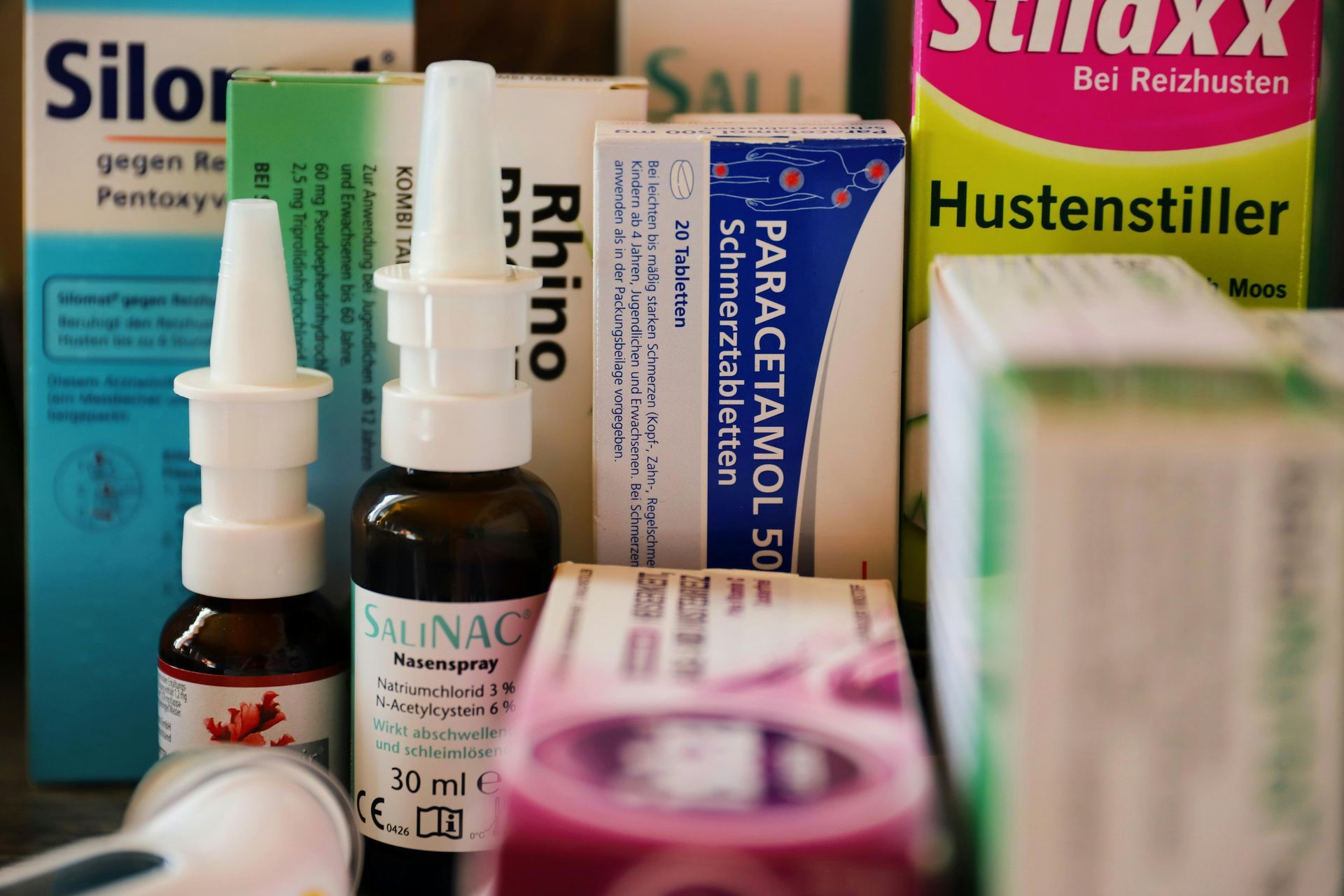SINUSITIS
Sinuses are air-filled cavities located within the bones of the skull. There are four pairs of sinuses: the frontal sinuses (in the forehead), maxillary sinus- es (behind the cheeks), ethmoid sinuses (between the eyes), and sphenoid sinuses (deep in the skull). The sinuses are lined with a thin layer of tissue known as the mucous membrane, which helps produce mucus to keep the nasal passages moist and trap microorganisms, particles, and allergens. The mucus drains into the nasal passages and ultimately into the throat, helping to maintain healthy respiratory function.
Infection of these sinuses or air-filled spaces is called sinusitis or more commonly, a “sinus infection.” This is a common condition affecting children and it is characterized by inflammation and the accumulation of infected mucous. It often occurs in association with the common cold or viral upper respiratory infections. Over 90% of children with acute sinusitis have a viral rather than a bacterial infection. These viruses include rhinovirus, adenovirus, influenza virus, and respiratory syncytial virus, among others. Please see our section on the common cold. Viral infection are not treatable, but must resolve with time. Most colds do not lead to bacterial sinusitis.
Sinusitis symptoms are facial pain and pressure, cough, nasal dis- charge, or postnasal drip. Because the preceding events leading to a sinus infection are usually viral common colds, it is best to let sinus symptoms resolve on their own without treatment. After a 10 to 14 day watchful waiting period, antibiotics may needed if sinus symptoms don’t resolve.
If sinus symptoms initially improve and then worsen again after five or six days, a phenomenon known as double-sickening, this may indicate bacterial sinusitis. This may require antibiotics.
For a diagnosis of sinusitis to be made, symptoms must be present for at least 10 days, or symptoms must be severe, with headache, pressure and purulent nasal drainage (yellow, thick infected mucous). Sinusitis can develop as a complication of a cold, if bacteria invade the already inflamed, swollen sinuses.
Allergies can contribute to chronic sinusitis by causing ongoing nasal inflammation, obstruction, and mucus production. Sometimes antibiotics are needed for sinusitis caused by allergies.
If symptoms persist for longer than 12 weeks, it may be considered chronic sinusitis. This may require a more thorough evaluation with a specialist, such as an allergist or otolaryngologist. In some cases, imaging studies like X-rays or CT scans may be used to provide further evaluation of the sinuses.
Treatment:
- Watchful Waiting: Most cases of uncomplicated sinusitis resolve on their own within 10-14 days without requiring treatment.
- Symptomatic Relief: Over-the-counter pain relievers (such as acetaminophen or ibuprofen), nasal saline sprays, and humidifiers can provide relief to ease symptoms while the body fights the infection.
- Antibiotic Therapy: Antibiotics may be prescribed for children with severe symptoms or if symptoms persist for more than 10 days despite supportive care. It’s important to follow the medication instructions and complete the full course of antibiotics as prescribed.
Sinusitis is a common condition in children, often occurring as a complication of a cold, upper respiratory infection or due to allergies. Diagnosis involves evaluation of symptoms, taking a medical history and doing a physical exam. Treatment options range from watchful waiting and supportive care to antibiotics in severe cases. We are trained to be able to determine what steps to take.
Understanding the relationship between a cold and sinusitis and the typical duration will help you provide appropriate care to your child and seek medical attention when necessary.


